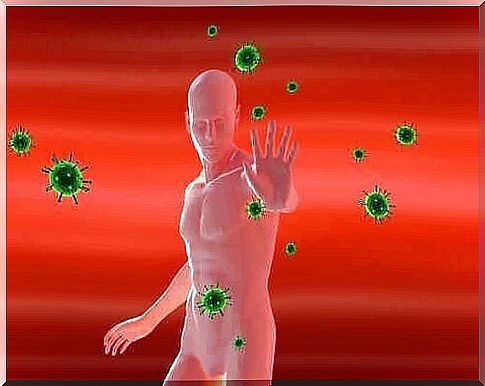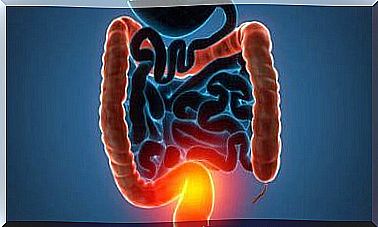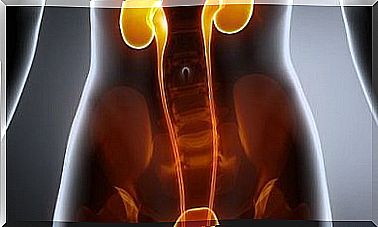Find Out How The Flu Affects The Body

Influenza is a viral disease that also depends on the season. Many people have had it before so they know how the flu affects the body. Certain bodily mechanisms are activated against the infection and are to blame for the symptoms.
Classic signs of flu are fever, headache, muscle aches and fatigue. When the flu usually develops without complications, these symptoms go away on their own without causing persistent problems.
However, some cases of influenza are more serious. When the virus attacks bodies with weakened immune systems due to age or the presence of underlying diseases, it can even cause death.
You should also know that the flu is not the same as a cold. A cold is much milder and the consequences are small and superficial. It is different from how the flu affects the body because the latter is much more aggressive.
The influenza virus also has social effects. Four out of 10 people with flu symptoms take time off work due to the disease, and virtually all reduce their sports and social activities.
The microscopic process of influenza
The signs and symptoms that are manifested externally are expressions of how influenza affects the body on a microscopic level. Different cellular mechanisms explain the occurrence of fever, headache and muscle pain.
When the flu virus enters the body, it has about eight hours to reproduce before the human immune system detects it. The virus enters through the airways and places itself on the epithelial cells of the lung.
When it enters human cells, the virus controls cell organelles that produce proteins and sets these organelles to work on its behalf. In short, it utilizes the “host’s” resources to multiply and survive. Subsequently, it searches for new viral copies to infect other cells.
When the immune system is activated to fight the flu virus, it triggers several reactions. These reactions establish the well-known flu symptoms and explain how the flu affects the body.
The first thing that is activated are the white blood cells. These cells form the first line for the subsequent activation of inflammatory mediators: Cytokines. These are small hormones that carry a message in the immune system. Their mission is to cause activation of organs and tissues to eliminate the virus from the body as quickly as possible.

Influenza causes fever
Of course, we need to mention fever when talking about how the flu affects the body. The disease causes fever, which is just one of its hallmarks.
The fever occurs when the lower part of the midbrain (hypothalamus) gives orders to increase body temperature. The hypothalamus issues the order because it senses the presence of substances called pyrogens. Among the pyrogenic substances we have the components in bacteria, viruses and cytokines.
As the body temperature rises, the white blood cells become more efficient. In fact, fever is a defense mechanism. Furthermore, microorganisms have difficulty reproducing at high temperatures.
Influenza causes headaches
It is not entirely clear why the flu causes headaches, but it is known that a headache is logical if there is a fever; this is not only characterized by influenza.
Cytokines have also been linked to headaches. Interleukin-1 is an inflammatory cytokine like interferon. Both cytokines and a high body temperature lead to vasodilation. The vessels of the body enlarge and this blood flow can explain the headache.

Muscle pain is one of the ways in which the flu affects the body
Muscle pain is also one of the hallmarks of the flu. Scientific studies have discovered a genetic explanation for this muscle pain, and the effect of cytokines also explains it.
During infection, the body increases the expression of certain genes that promote the destruction of myocytes.
At the same time, inflammatory cytokines cause the muscles to swell to fight the virus. Muscle inflammation is painful and it exhausts the muscles as the cells are focused on fighting the virus. This is why you experience fatigue when you have the flu.
Conclusion on how flu affects the body
We probably know about the mechanisms that explain how the flu affects the body, but there is much more that needs to be investigated. When you suffer from this infection, you will experience fever, headaches and muscle aches.
The symptoms are an indication that the immune system is fighting the virus. At the same time, you need to do your part to speed up the process, which means that you need to rest and seek medical attention when necessary.









